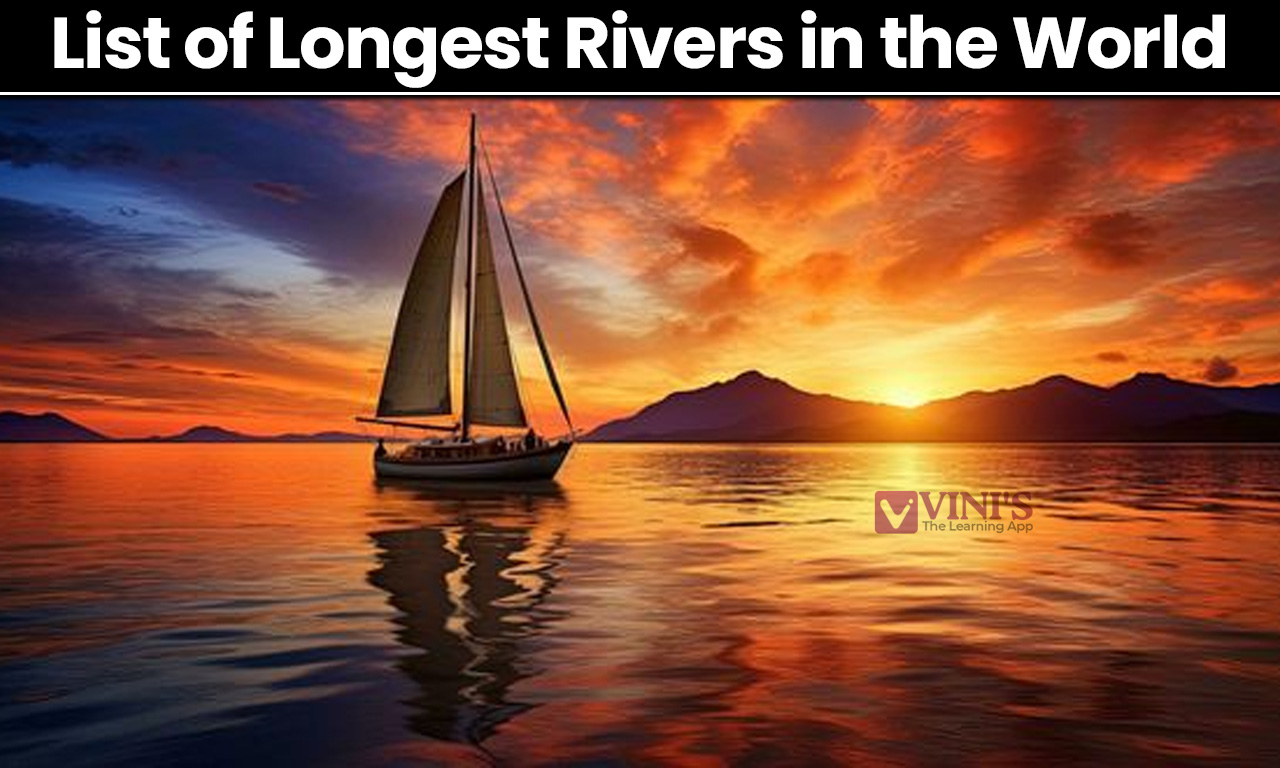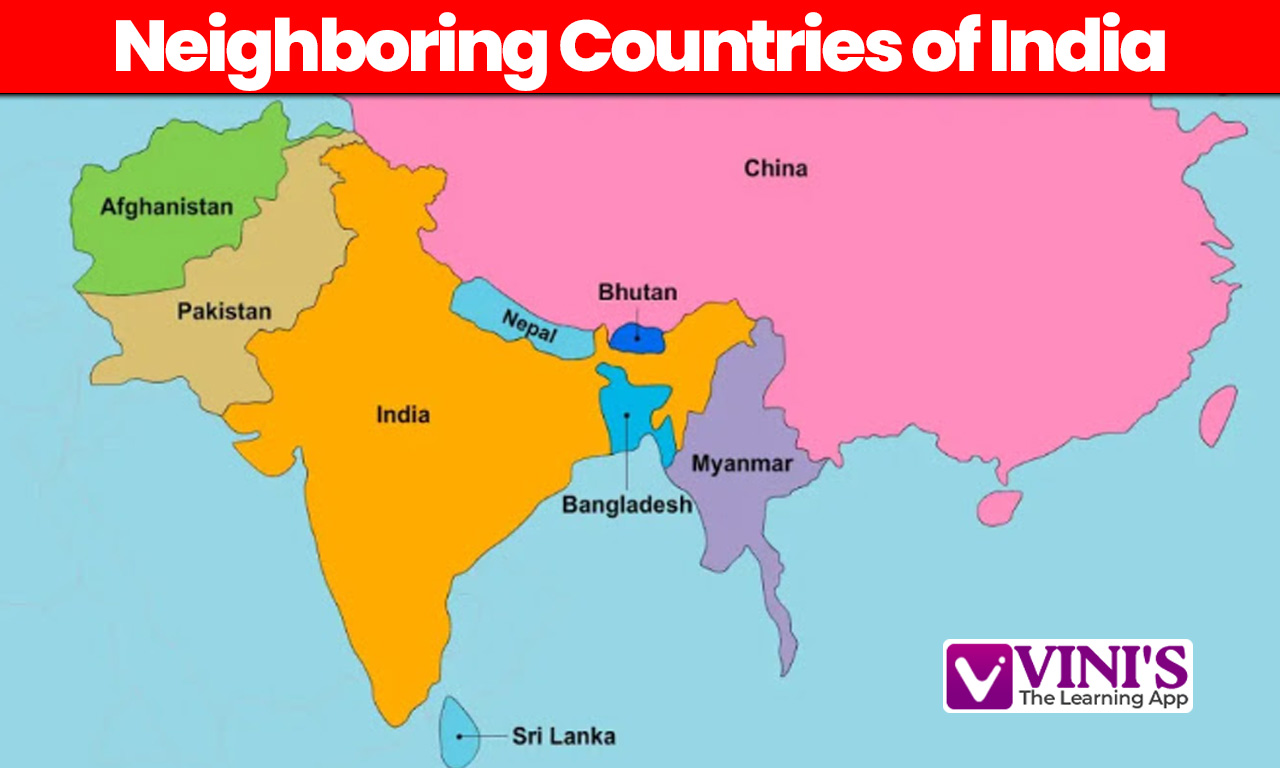Longest Rivers in the World:- Rivers have played a crucial role in shaping human history and the natural world. They are more than just long stretches of water; they are lifelines that have supported civilizations, driven trade, and inspired countless stories. When we talk about the longest rivers in the world, we’re looking at some truly remarkable waterways.
From the Nile in Africa, which has been a cornerstone of ancient cultures, to the Amazon in South America, known for its vast expanse and rich biodiversity, each of these rivers has its unique significance. Knowing about the world’s major rivers is quite important for competitive exams. You’ll often find questions on this topic in the general awareness sections of tests like SSC, RRB, Bank exams, and other government exams. Even for UPSC prelims, you might come across a question or two about key rivers. Check out the List of Longest Rivers in the World below.
Table of Contents
ToggleList of Longest Rivers in the World
Check out the Top 10 Longest Rivers in the World and their details from the below table:-
| Longest Rivers in the World | Location | Length (Miles) | Length (Km) | Drainage Area | Drain | Countries |
| Nile | Africa | 4,130 | 6,650 | 3,254,555 sq km | Mediterranean Sea | Ethiopia, Eritrea, Sudan, Uganda, Tanzania, Kenya, Rwanda, Burundi, Egypt, Democratic Republic of the Congo, South Sudan |
| Amazon | South America | 4,086 | 6,575 | 7,050,000 sq km | Atlantic Ocean | Brazil, Peru, Bolivia, Colombia, Ecuador, Venezuela, Guyana |
| Yangtze | China | 3,917 | 6,300 | 1,800,000 sq km | South China Sea | China |
| Mississippi | USA | 3,902 | 6,275 | 2,980,000 sq km | Gulf of Mexico | USA, Canada |
| Yenisei-Angara-Selenge-Ider | Russia | 3,445 | 5,539 | 2,580,000 sq km | Kara Sea | Russia, Mongolia |
| Yellow | China | 3,398 | 5,464 | 745,000 sq km | Bohai Sea | China |
| Ob-Irtysh | Russia | 3,364 | 5,410 | 2,990,000 sq km | Gulf of Ob | Russia, Kazakhstan, China, Mongolia |
| Parana | Uruguay | 3,030 | 4,880 | 2,582,672 sq km | Rio de la Plata | Brazil, Argentina, Paraguay, Bolivia, Uruguay |
| Congo | Africa | 2,922 | 4,700 | 3,680,000 sq km | Atlantic Ocean | Democratic Republic of the Congo, Central African Republic, Angola, Republic of the Congo, Tanzania, Cameroon, Zambia, Burundi, Rwanda |
| Amur | Asia | 2,800 | 4,480 | 1,855,000 sq km | Sea of Okhotsk | Russia, China, Mongolia |
Also, check UNESCO World Heritage Sites in India or UNESCO
Top 10 Longest Rivers in the World
- Nile River (Length: 6,650 km)
The Nile River, stretching approximately 6,650 kilometres, is widely recognised as the longest river in the world. Originating from Lake Victoria, it traverses several countries, including Egypt, Uganda, Ethiopia, Kenya, and others. The Nile has two main tributaries: the Blue Nile and the White Nile. While it holds the title for many, some scholars argue that the Amazon River could be longer, as determining a river’s true length involves locating its farthest source—a challenging task often complicated by remote and inaccessible locations. - Amazon River (Length: 6,575 km)
Known for its massive water flow, the Amazon River is the largest river by volume. Its length is a topic of debate, with some considering it the second-longest after the Nile. Recent studies suggest that the Amazon’s true source might be the Cordillera Rumi Cruz, though this is still under discussion. - Yangtze River (Length: 6,300 km)
The Yangtze River is the longest river in Asia and the third-longest globally. It flows entirely within China and is crucial for a significant portion of the country’s population. The traditional source is considered to be the Tuotuo River in the Tanggula Mountains, though newer research points to Jari Hill as the true origin. The Yangtze empties into the East China Sea at Shanghai. - Mississippi River (Length: 6,275 km)
The Mississippi River, along with the Missouri and Jefferson rivers, forms the fourth-longest river system in the world. It begins in northern Minnesota, with Lake Itasca as its source, and flows into the Gulf of Mexico. Including the Jefferson River as its farthest source gives the Mississippi-Missouri-Jefferson river system its full length. - Yenisei River (Length: 5,539 km)
The Yenisei River is the fifth-longest river system and the largest draining into the Arctic Ocean. Its headwaters are considered to be the Selenge River, which flows into Lake Baikal. The Angara River, originating from Lake Baikal, joins the Yenisei, which then flows into the Arctic Ocean. - Yellow River (Length: 5,464 km)
Also known as the Huang He, the Yellow River gets its name from the yellow silt carried in its waters. It is regarded as the cradle of ancient Chinese civilisation and remains highly significant in China both symbolically and practically. - Ob-Irtysh River (Length: 5,410 km)
The Ob-Irtysh, or Ob River, is one of the major Siberian rivers alongside the Yenisei and Lena. It flows into the Arctic Ocean and originates in the Altai Mountains. - Parana River (Length: 4,880 km)
The Parana River, one of South America’s longest rivers, is the continent’s second-largest. Its name derives from the Tupi phrase “para rehe onáva,” meaning “like the sea.” - Congo River (Length: 4,700 km)
The Congo River, formerly the Zaire River, winds through Africa and uniquely crosses the equator twice. It is the deepest river in the world, with some sections exceeding 700 feet in depth. - Amur River (Length: 4,480 km)
The Amur River, or Heilong Jiang, runs along the border between northeastern China and Russia. The name “Heilong Jiang” translates to “black dragon river,” while “Amur” is derived from a term meaning “water.”
Keep reading VINI IAS for latest news on govt. exam.













